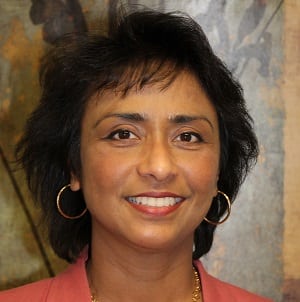
When most people contemplate being a mentor, they think in terms of how their knowledge, experience and connections could assist a protégé. Rarely do they consider what they can learn from the experience.
I had long considered becoming a mentor. My 10 years of academics in electronics and electrical engineering had prepared me well to enter and make an impact in a field where there are relatively few women. I wanted to give back.
Even more than that, I wanted to leverage my background and experience to influence the next generation of women to understand all the opportunities an education in science, technology, engineering and mathematics can bring — and to take full advantage of them.
So, when Women in Technology emailed me an invitation to participate in its Girls in Technology Mentor-Protégé Program, I jumped at the chance. I signed up almost immediately, brimming with excitement at the chance to inspire young women, share my STEM experience and to guide them in the direction of STEM careers.
For those unfamiliar with the WIT GIT program in the Washington, D.C., area, it offers mentors a variety of ways to participate. I opted to volunteer for one-on-one sessions, a college/career fair and the GIT Experience at the USA Science and Engineering Festival.
My one-on-one session presented me with an engineering problem. A high school student wanted to track the time and distance she swam to demonstrate to her PE teacher the level of exercise she was achieving outside of school. She also hoped the ultimate solution could provide feedback on swim stroke rate/mechanics to help competitive swimmers improve their performance. She thought her smartphone might form the basis of the solution.
Step by step, I tried to guide her through the technical challenges inherent with developing the type of device she envisioned. How would it capture the data? How would she waterproof the capture device? How would this device communicate with her cellphone? And so on. By session’s end, she appeared to be much more comfortable framing the design concept and had a better grasp of areas she needed to address, including obtaining funding and prototype testing. I felt good about the experience and hoped she did, too.
The next two events took me out of my comfort zone. The College/Career Fair and the Science and Engineering Festival were both fantastic. I enjoyed meeting the young women in attendance and their families. I was amazed at the poise, self-confidence and career-focused thinking that these young ladies demonstrated. They asked many general questions about STEM professions. They also asked specific questions about my own STEM profession, why I liked it and its impact.
I struggled at first to give answers that would inspire them to follow a similar path. I wanted my responses to be both understandable and impactful. However, explaining what I do as the founder and CEO of a professional services business that provides cybersecurity support for federal IT systems wasn’t an easy task. Saying my company “keeps government computers secure” seemed too simplistic for members of Gen Z who have always had the internet, are familiar with all types of technology and use social media all the time with few concerns for the security of their data. Yet, speaking in the technical terms so second nature to me was not the answer either.
To reach my audience, I had to stretch my thought processes to find a fascinating way to communicate the impact of a very technical field. I eventually found that middle ground, and my comfort level grew as each subsequent conversation seemed to spark a sense of excitement in these middle and high school girls.
Beyond communicating the perceived impact of my career, my message focused on the benefits of a STEM career. I explained how STEM careers enable us to work on leading-edge technologies that can change the world; offer wide-ranging job opportunities that command great salaries; and allow us to achieve work-life balance. If even one of the students with whom I spoke is motivated by my words, then I would have made a difference. The possibility of changing the course of someone’s life is both humbling and gratifying.
My experiences reminded me of the passion I still feel for my engineering career after all these years. I really enjoy my work and my profession, and this formal mentoring experience made me realize that I’ve informally mentored many others over the years – members of my family, friends and employees at my company, Electrosoft – to pursue and embrace STEM education and careers. I’d also like to think that my efforts to “keep government computers secure” has benefited our nation and its citizens as well.
Along my career path, several memorable mentors made a difference in my life. It felt good to play this role for someone else. Giving back or, as they say, “paying it forward” is a very rewarding experience. I came away feeling that our future is in good hands whatever field these young women choose to pursue. They are smart, confident and eager to succeed.
In opting to be a mentor, I only thought of what I could give someone else. However, looking back at the experience, I realize that I gained as much or more as my protégés. I highly recommend being a mentor whether you do so informally by assisting a friend or colleague at work or participating in a structured program. Either way, you’ll be glad you did.

